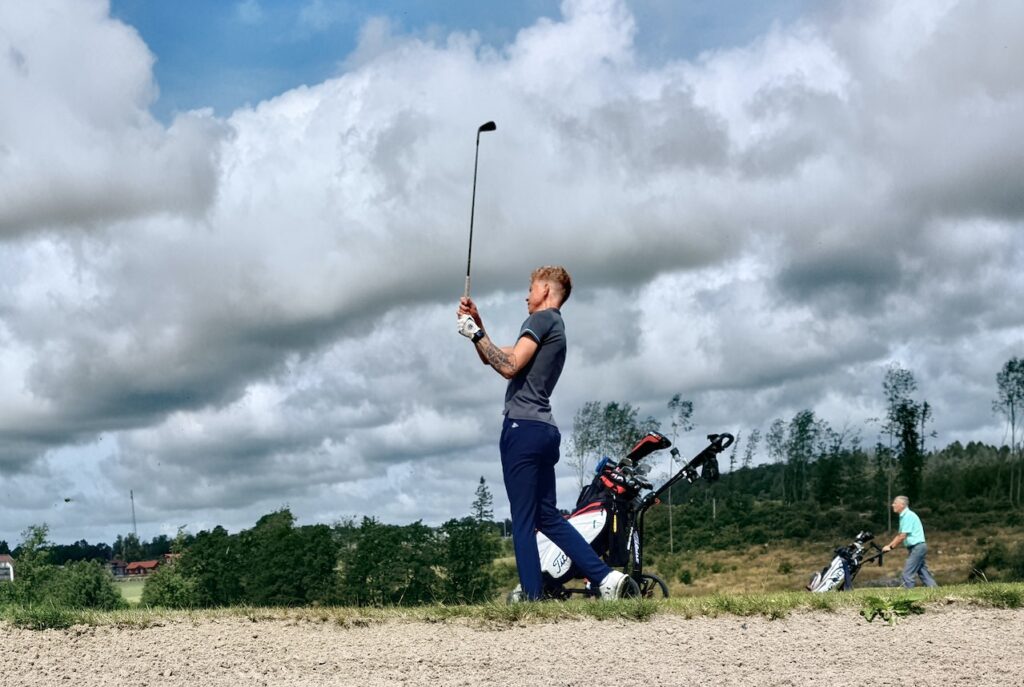In addition to the English term, which is more widely used, you can hear approach shot to talk about it.
In golf, this is the name given to the shots that are hit around the green to bring the ball closer to the hole.
And the normal thing is to close the hole with a putt, but all the previous shots are as important or more and of course they all add up.
The ones that will make you under or over par.
If you use too many shots to get close to the hole, then you will have few opportunities on the putt to make a good hole and that increases the pressure and the mistakes.
These shots, the precision shots, that show the true skill of the player and mastering them is the key to lowering your handicap.
We start talking about an approach when the ball is less than 100 metres from the hole and the club that is usually used is the wedge, which is the short game specialist.
Luckily, golf, unlike other sports, allows you to be active for a long time, so there is plenty of room to improve your technique and game.
Persevere and practice often.
Find your perfect shot and repeat it over and over again.
That’s what golf is all about, hitting a shot at the ball that you’ve done so many times before that the day you have to do it under pressure, it almost comes out on its own.
Not sure what you can do to improve your short game?
Continue reading.
The definitive list of tips to improve this key stroke.
1. First of all, know your clubs well.
They are your best tool, an extension of your body.
Knowing them perfectly is the first task to which you should spend a lot of time.
What effect each one produces, what trajectory it gives to the ball, how you can lift the ball and what your swing is like with each one of them.
Create a combination of wedges that will help your game as much as possible.
2. Hit using your head.
Yes, just as it sounds, that’s what you should do.
When approaching, you must think carefully about how to hit the ball to get as close as possible to the green and the hole.
There are several types of shots, but above all you must master two, which are the ones that can get you out of a lot of trouble.
- Chip: A short approach shot whose objective is to make the ball fly a short distance so that later, with a long roll, it reaches the hole. If you want the drive to be short on the fairway and roll well into the green, use a 5 or 6 iron. On the other hand, if you want the opposite, a long drive on the fairway and short on the green, choose an 8 or 9 iron.
- Pitch: The ball will travel between 30 and 50 metres and most of this distance will be in flight to land on the green. The ideal club for this shot is the wedge, because it helps you to lift the ball.
Both shots are very precise and require a lot of practice and control of the swing, so that they become your best advantage and don’t put you in a difficult situation.
Tip to get a perfect ball flight on your approach.
Place a wet towel on the green, well stretched out. Practice, alternating your wedges,
to land the ball on the towel.
Being accurate with this shot and understanding the trajectory of the ball is the key to mastering your game.
3. Feel comfortable.
It may seem obvious, but if you don’t feel good, feel relaxed and have a good feeling, you can have the best club, amazing technique and a great vision, but you won’t be able to hit the perfect shot.
This will come with practice.
But always remember, if you are not relaxed, the shot won’t be either.
4. The driver, your key to the approach.
To practice your approach shot, you have to know your tee shot well.
If you keep a regular distance on this shot, you will be able to calculate the distance that the ball is usually left from the green.
Knowing this will help you practice from a more specific point.
Simulating situations that may occur on the course will make you more familiar with the shot on the day you play it.
5. Control the pressure of your feet.
Or in other words, the weight.
If you know how to distribute the weight well between your feet, you will be adding extra precision to your approach.
There is a widespread belief that the right thing to do is to put more weight on the right foot and this is one of the most common mistakes made.
It’s the other way around.
If you put more weight on the left, you will improve your position for the shot and the backswing will be perfect.
Ideally, when you start the shot, the pressure should be distributed like this: 60% on the left foot and 40% on the right.
Maintain this as you rotate your hips and shoulders to make the backswing.
As you begin to turn to drive the club into the ball, gradually increase that pressure on the left to 80%.
By the end of the swing, the pressure on the left foot should be 100%.
6. The arch of the swing.
One of the most common mistakes is not giving the swing arch width and bending the left arm at the moment of impact.
To get good speed and hit the ball well, be sure to keep your hands at the same distance from your body throughout the swing.
7. What about the hands? In front
The position of the hands is fundamental in the approach and the right thing to do is to have them in front.
This way, you will be able to hold the club firmly before you start to turn to execute the swing.
Remember that these types of short shots often lead to the club hitting the ground and bouncing, which is another reason to keep your hands in front of the iron head.
When you hit, if you press hard forward, you will prevent the club from bouncing off the grass and deflecting the angle you had planned.
8. Body yes, wrists and hips no.
If we had to define the parts of the body involved in the approach, this would be the best headline.
Whether you make a chip or a pitch, it is common to tend to overload the wrist to direct the shot.
But this is not only a mistake, it will make you hurt and the stroke will be inconsistent in its direction and result.
Bend your legs slightly, facing the approach.
Control your body, make it turn all the way, all at once. Swing the club head back and move your right knee to the left.
This will help you to be accurate and open up the arch of the swing.
Hit the ball on the downswing, from the right side. If you do this, your body will go with you to get a good swing and you will hit a good shot.
Also, if you don’t swing that way, the shaft is likely to hit you in the hip.
9. Don’t forget your left arm.
It may seem strange at first glance, but let your left arm and wrist guide the motion all the way to ball contact.
This part of your body is in control and you will be aiming with it.
10. A good rhythm.
Balance on every shot is key.
In some strokes, such as the drive, speed and power are essential.
However, in the short stroke we are looking for control.
Give a firm but smooth stroke, which gives the ball the necessary force to make a journey that leaves you feeling satisfied.
11. The club, soft.
Doing the opposite is very common when starting out in golf.
Gripping the iron too hard, especially in the short game, can damage your stroke.
So how do you do it?
Soft but firm hands, relax arms and wrists.
Back straight, chin high, and watch it roll.
12. Persevere.
Finally, the best advice.
It will fill you with patience, practice and practice until you get an approach that will live up to its name: leave the ball very close to the hole and with the least number of strokes.
Follow all these tips and don’t forget the most important thing, enjoy golf.


